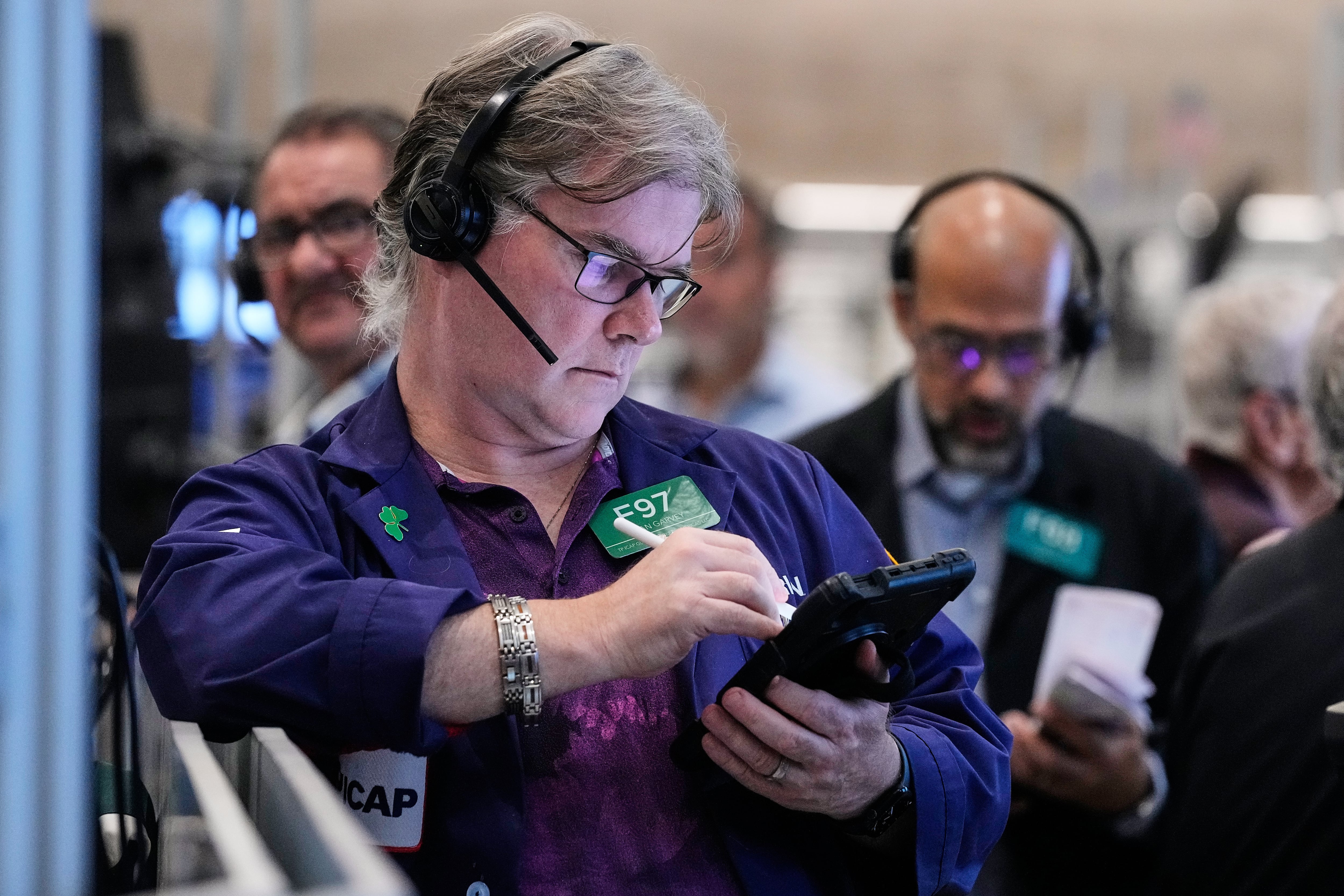WASHINGTON (AP) — Americans’ view of the U.S. economy worsened in June, resuming a downward slide that had dragged consumer confidence to its lowest level since the COVID-19 pandemic five years ago.
The Conference Board said Tuesday that its consumer confidence index slid to 93 in June, down 5.4 points from 98.4 last month, which represented a brief uptick.
The regression surprised economists, who had expected a small uptick this month.
In April, American consumers’ confidence in the economy sank to its lowest reading since May 2020, largely due to anxiety over the impact of President Donald Trump’s tariffs.
A measure of Americans’ short-term expectations for their income, business conditions and the job market fell 4.6 points to 69. That’s well below 80, the marker that can signal a recession ahead.
Consumers’ assessments of the present economic situation declined by 6.4 points to 129.1.
Tariffs and the impact they could have on personal finances remained at the top of respondents’ minds, the Conference Board said.
Trump’s aggressive and unpredictable policies — including massive import taxes — have clouded the outlook for the economy and the job market, raising fears that the American economy is headed toward a recession.
Consumers’ fears of a recession during the next 12 months rose slightly in June and remain elevated, according to the survey results.
The Conference Board said that the three components of the expectations Index — business conditions, job prospects, and future income — all weakened.
It was the sixth straight month that respondents’ views of the job market deteriorated, though the reading remains in positive territory as the U.S. labor market continues to churn out jobs.
The Labor Department earlier this month reported that U.S. employers slowed hiring in May, but still added a solid 139,000 jobs amid uncertainty over Trump’s tariffs. Unemployment remains historically low at 4.2%.
Though concerns about inflation ticked down slightly in June, it remains a major concern among respondents, who frequently mentioned higher prices in tandem with tariffs.
A government report earlier this month showed that consumer prices ticked up in May to 2.4% from a 2.3% year-over-year increase in April. Core prices, which excludes the volatile food and energy categories, rose 2.8% for the third straight month. Economists pay close attention to core prices because they generally provide a better indication of where inflation is headed.
The Board said respondents’ references to geopolitics and social unrest increased slightly from previous months, but are still significantly lower on the list of consumers’ concerns.
The deadline for survey responses was June 18, before the U.S. targeted Iranian nuclear sites but after Israel’s bombing of Tehran.
The mighty heft of Amazon is pulling the U.S. stock market higher. The S&P 500 rose 0.6% Friday, erasing some of its slump from the day before and pulling closer to its all-time high set on Tuesday. The index is on track to close a third straight winning week and a sixth straight winning month, which would be its longest monthly winning streak since 2021. The Dow Jones Industrial Average added 65 points, and the Nasdaq composite climbed 1.1%. Amazon led the way after delivering a much bigger profit than analysts expected. Treasury yields eased a bit in the bond market.
President Donald Trump said he has decided to lower his combined tariff rates on imports of Chinese goods to 47% after talks with Chinese leader Xi Jinping on curbing fentanyl trafficking.
The Federal Reserve cut its key interest rate Wednesday for a second time this year as it seeks to shore up economic growth and hiring even as inflation stays elevated. The move comes amid a fraught time for the central bank, with hiring sluggish and yet inflation stuck above the Fed’s 2% target. Compounding its challenges, the central bank is navigating without much of the economic data it typically relies on from the government. The Fed has signaled it may reduce its key rate again in December but the data drought raises the uncertainty around its next moves. Fed Chair Jerome Powell told reporters that there were “strongly differing views” at the central bank's policy meeting about to proceed going forward.
The Federal Reserve will almost certainly cut its key interest rate on Wednesday and could signal it expects another cut in December as the central bank seeks to bolster hiring. A cut Wednesday would be the second this year and could benefit consumers by bringing down borrowing costs for mortgages and auto loans. Since Fed chair Jerome Powell strongly signaled in late August that rate cuts were likely this year, the average 30-year mortgage rate has fallen to about 6.2% from 6.6%. Still, the Fed is navigating an unusual period for the U.S. economy and its future moves are harder to anticipate than is typically the case.
Stocks are rallying toward more records ahead of a week packed with potentially market-moving events. The S&P 500 rose 1% Monday. The Dow Jones Industrial Average added 224 points, and the Nasdaq composite jumped 1.7%. Stocks also climbed in Asia ahead of a meeting on Thursday between the heads of the United States and China. The hope is that the talks could clear rising tensions between the world’s two largest economies. This upcoming week will feature profit reports from some of Wall Street's most influential companies and a meeting by the Federal Reserve on interest rates. Gold fell back toward $4,000 per ounce.
U.S. and Chinese officials say a trade deal between the world’s two largest economies is drawing closer. The sides have reached an initial consensus for President Donald Trump and Chinese leader Xi Jinping to aim to finalize during their high-stakes meeting Thursday in South Korea. Any agreement would be a relief to international markets. Trump's treasury secretary says discussions with China yielded preliminary agreements to stop the precursor chemicals for fentanyl from coming into the United States. Scott Bessent also says Beijing would make “substantial” purchases of soybean and other agricultural products while putting off export controls on rare earth elements needed for advanced technologies.
Some seniors say the Social Security Administration's cost-of-living adjustment won’t help much in their ability to pay for their daily expenses. The agency announced Friday the annual cost-of-living adjustment will go up by 2.8% in 2026, translating to an average increase of more than $56 for retirees every month. Eighty-year-old Florence, South Carolina, resident Linda Deas says it does not match the current "affordability crisis.” The benefits increase will go into effect for Social Security recipients beginning in January. Friday’s announcement was meant to be made last week but was delayed because of the federal government shutdown. Recipients got a 2.5% COLA boost in 2025 and a 3.2% increase in 2024.
Wall Street is heading for records after an update said U.S. households are feeling a bit less pain from inflation than feared. The S&P 500 climbed 1% Friday and was on track to top its all-time high set earlier this month. The Dow Jones Industrial Average jumped 529 points, and the Nasdaq composite rose 1.3%. Both are also heading toward records. The inflation data could clear the way for the Federal Reserve to keep cutting interest rates in hopes of helping the slowing job market. A strong earnings reports from Ford Motor and continued gains for AI stars also drove stocks higher.
Federal Reserve Chair Jerome Powell says that a sharp slowdown in hiring poses a growing risk to the U.S. economy.
Three researchers who probed the process of business innovation have won the Nobel memorial prize in economics for explaining how new products and inventions promote economic growth and human welfare, even as they leave older companies in the dust.













